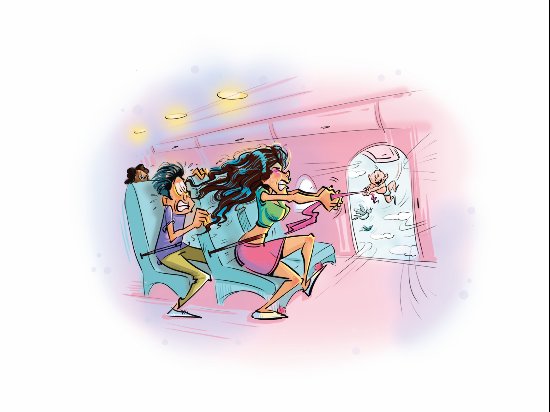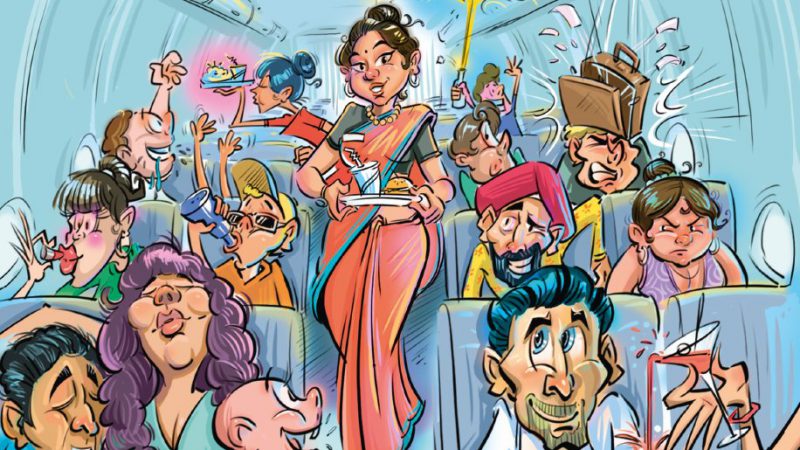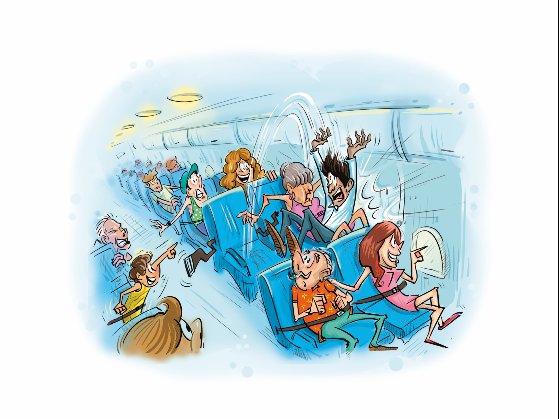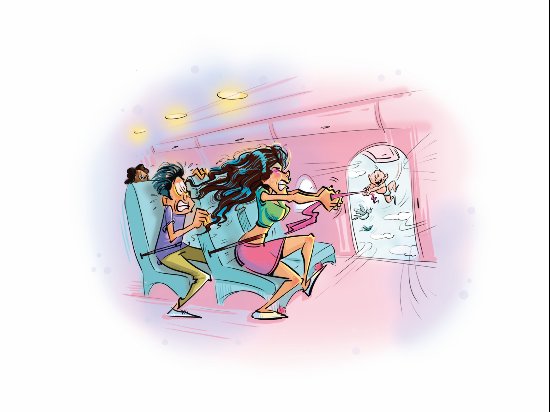Aviation FAQs
Here is list of the top questions passengers would ask if a pilot were sitting in the next seat.
September 30, 2019


In some ways being the passenger is more complicated than ever and that position is not going to get easier. As new technology rolls out and the avionics pilots’ bible gets ever thicker, passengers are usually called upon to do their part by staying in their seats, staying safe and staying out of the way. No doubt many of the policies, however, seem fatuous and aimed at convenience for flight attendants. Who among us has not been scored by an officious steward as we make a mad dash for the lavatories through smooth skies while the seatbelt sign beamed? Still, there is method, calculations and liability behind the madness of flying in the 21st century.

1, Why do pilots recommend you to keep your seat belt loosely fastened during the flight?
Yes, most of us are just yearning to unfasten our seat belts soon after take-off, almost indicating a sense of liberation. But, hey, there is a reason why flight crew tells you to keep your seat belts on at all times. In fact, when you do not wear a seat belt, you are directly vulnerable to injury in the event of unexpected turbulence (an air pocket). There have been cases of clear air turbulence, where unsecured passengers have been flung out of theirseats during a drop and hit the ceiling. Ouch!
2. Why are cabin lights turned off completely during a night take-off or landing?
The simple reason why cabin lights are turned off for a night take-off or landing is so that passengers’ eyes get acclimatized to the outside low light conditions – this ensures maximum alertness and visibility in the unlikely event of an emergency evacuation. This is also so that you can easily spot the floor lights on the aisle, which lead you to the exits. During an evacuation, the last thing you need is visual disorientation!
3. Before departure, the pilot announces “crew arm doors”… What does this mean?
Most people ignore this mandatory pre-flight announcement because they simply don’t know what it means. While this is part of cabin crew lingo, it is good to know that “arming a door” basically means that before the flight, the door is made ready for use in an emergency evacuation — the escape slides are activated. Similarly, on arrival, the crew will disarm the doors — or deactivate the escape slides — as they are no longer needed.
4. Which part of the plane is most stable, in case I am sensitive to turbulence or get airsick?
This is a hotly debated subject, with some aviation experts suggesting that the front end of the plane is where you are least vulnerable to airsickness. However, not everyone is lucky enough to be in first class. If you do have to travel in economy class, most cabin crew will often tell you that the zone over the wings is the most stable and is relatively less bumpy during turbulence.
5. Why can’t I place my luggage on the floor during take-off or landing?
Ever wondered why the cabin crew is so paranoid about luggage on the floor? You are asked to stow your bags under the seat in front of you for two reasons — should anything untoward happen during take- off or landing, you don’t want your branded tote to turn into a dangerous projectile flying through the cabin. Also, and most importantly, bags placed improperly on the floor could hamper a smooth evacuation turning the aisles into an obstacle course!

6. Why can’t I sit at the emergency exit row with my kids and pregnant wife? It’s so much more comfortable!
That extra legroom on an emergency exit row may be a luxury, however, sitting at the exit (row) comes with an obvious caveat — you would need to support the crew in the event of an emergency, or perhaps even open the door yourself. In airline lingo, the exit rows are strictly for “ABPs” (able bodied passengers). For that logical reason, the exit rows are not available to kids, pregnant ladies and elderly travelers.
7. I am a frequent flier. Why do I need to listen to the pre-flight safety briefing? It’s so boring!
It is the most important part of your flight, if you care about your safety. Admittedly, most frequent flyers are guilty of not listening to the safety briefing — but you ought to — even though, on most short hauls, it is conducted manually by visibly robotic crew. Exits, layouts and evacuation procedures differ from aircraft to aircraft, and you need to be familiar with your plane for the day. Airlines like Brussels Airlines, Emirates and Turkish Airlines have come out with fun, eye-catching safety videos that grab your attention.
8. Do long-haul crews really have a secret bunk with beds for them to sleep?
Ever wondered where the crew disappears on long-haul flights, after the meal services? During a recent A380 flight from Sydney to Singapore, I stumbled into the galley and asked the crew this. Turns out, it’s true — bigger planes like the Boeing 777 and A380 have crew rest bunks with flat beds. They are located above the cabin ceiling or below the cabin floor, with a code-locked door. On long haul flights, the crew is legally required to have adequate rest time to ensure optimum alertness and to reduce fatigue. Rest slots and schedules are usually pre-determined by the chief purser before the flight.
9. On landing, why does the crew insist that passengers remain seated till the aircraft has come to a complete halt?
This is one we can relate to. We’ve all seen passengers who leap up and make a beeline for the overhead bins the moment the aircraft has landed and is still taxiing to the gate. Think of this – you wouldn’t unbuckle your car seat belt just because you’re going slow. Same goes for taxiing aircraft, which can sometimes brake or turn abruptly, causing standees to tumble. Not to mention bags falling out of open overhead bins due to the aircraft movement.
10. How do flight attendants manage to heat up and serve 200-300 economy class meals so easily?
If you observe keenly on boarding, you will notice that not all the crew are visible in the cabin. Some of them have been assigned a galley “work position” and their duty is to heat up the meals, which the other cabin crew will serve to passengers. Typically, aircraft galleys have convection ovens into which meals are stacked in racks and heated. These heated meals are then removed from the ovens and placed into meal trays for passengers. In business and first class, pre-cooked ingredients are heated up and then plated individually for the passengers as a usual practice. Depending on flights and cities, airplane food has been prepared and frozen a couple of hours — sometimes days — before the actual flight.




